Clogged or congested pores are small openings on the skin's surface that can become blocked with oil, dead skin cells, and bacteria. When this occurs, the pores can appear larger and more visible, leading to a range of skin concerns such as acne, blackheads, and dullness. In this blog, we will provide a comprehensive guide on how to unclog pores on face, nose, and or other skin areas.. We will also discuss the best skincare products for both open pores and clogged or closed pores, and address the question of whether it is possible to close open pores permanently. By following the tips and advice provided in this blog, you can effectively improve the appearance of your open pores and achieve healthy, glowing skin.
What causes clogged pores?
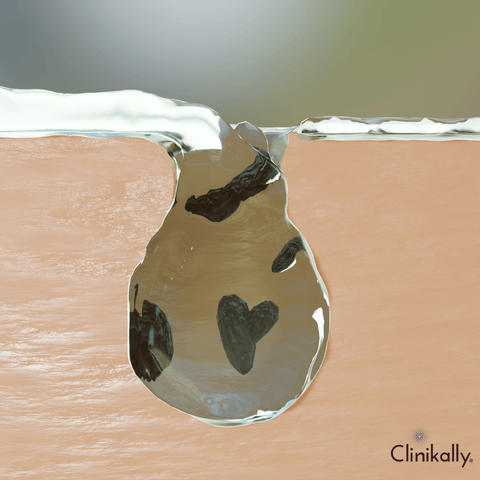
Clogged pores, or congested pores, are small openings on the surface of the skin that can become blocked with oil, dead skin cells, and bacteria. When this occurs, the pores can appear larger and more visible, leading to a range of skin concerns such as acne, blackheads, and dullness. Closed pores are common in people with oily or combination skin types, and can be caused by a variety of factors including hormonal changes, improper skincare, and environmental pollutants.
Understanding the role of sebum in clogged pores
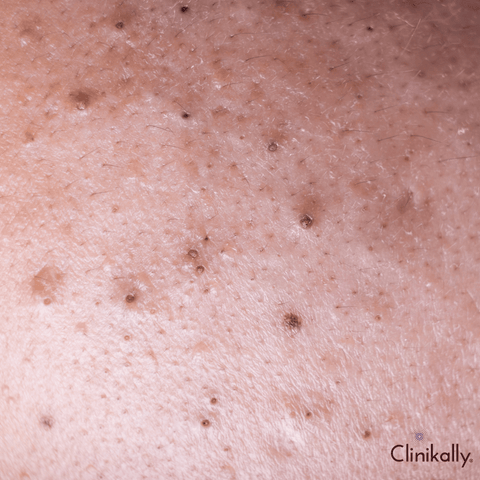
Sebum is an oily, waxy substance secreted by the skin's sebaceous glands. These glands are most common on the face and scalp, although they can be found in other parts of the body as well. Sebum is essential for skin health, but when it gets excessive or is not handled properly, it can contribute to clogged pores. Here's how sebum contributes to clogged pores:
-
Natural Lubrication: Sebum is necessary for keeping the skin moisturised and from drying out. It provides a protective layer on the surface of the skin, reducing water loss and ensuring a healthy barrier function.
-
Hair Follicle and Pore Function: Sebaceous glands are linked to hair follicles, and sebum is released from the hair follicle to the skin's surface. This procedure aids in the lubrication of the hair and skin. However, when the flow of sebum is obstructed, issues can emerge.
-
Excess Sebum Production: Some people may have overactive sebaceous glands, resulting in excessive sebum production. Excess sebum, when coupled with dead skin cells and other debris, can form a block in the hair follicle, resulting in a comedo or clogged pore.
-
Acne Formation: When sebum and dead skin cells become caught in the hair follicle, it can foster the growth of bacteria, particularly Propionibacterium acnes (P. acnes). This can cause inflammation and the formation of acne lesions such as blackheads, whiteheads, pimples, and cysts.
-
Contributing Factors: Hormonal changes, genetics, some drugs, and environmental variables can all have an impact on sebum production. For example, hormonal changes during puberty might promote sebum production, making adolescents more prone to acne.
It is critical to maintain appropriate skincare practices, including frequent cleaning to remove excess oil, debris, and dead skin cells, to prevent and manage clogged pores. Exfoliating to avoid the accumulation of dead skin cells and utilising products that help regulate sebum production can also be beneficial. In severe cases, consulting a dermatologist is advised to explore targeted therapy alternatives.
Environmental factors contributing to clogged pores
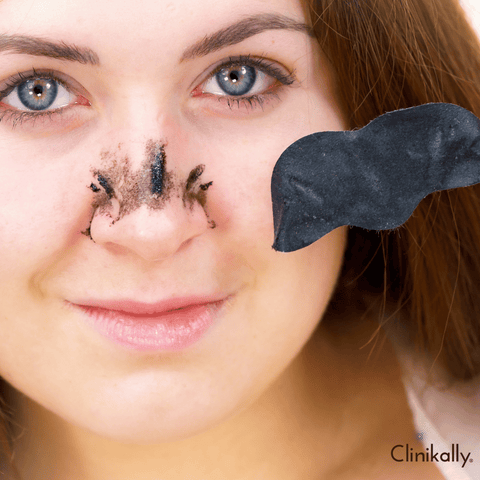
A variety of environmental factors can contribute to pore clogging, exacerbating acne and other skin conditions. Here are some of the most important environmental factors:
-
Humidity and Climate: Hot and humid weather can increase sebum production, potentially leading to oily skin and plugged pores. Temperature fluctuations, particularly exposure to excessive heat, can disrupt the skin's balance and contribute to pore clogging.
-
Air Pollution: Particulate matter and toxins in the air can settle on the skin and mix with sebum, forming a layer that can clog pores and contribute to skin problems.
-
UV Radiation: Prolonged sun exposure can damage the skin, alter sebum production, and cause thickening of the skin's outer layer (stratum corneum), potentially resulting in clogged pores.
-
Cosmetic Products: Certain skincare and cosmetic products, particularly those containing thick or occlusive ingredients, have the potential to clog pores and cause blockages.
-
Sweating: Although exercise is good for your health in general, sweating too much can lead to an accumulation of sweat, oil, and debris on your skin, which could cause clogged pores.
-
Occupational Exposures: Individuals who work in high-particulate air environments or in jobs involving chemical and/or oil exposure may be more susceptible to clogged pores.
-
Poor Air Quality: Tobacco smoke and volatile organic compounds (VOCs) are two indoor pollutants that can affect skin health and cause clogged pores.
-
Hard Water: Due to the high mineral content of hard water, such as calcium and magnesium, cleansers may leave deposits on the skin and be more difficult to rinse off, which can lead to clogged pores.
-
Stress: Prolonged stress can interfere with the balance of hormones, which may cause acne and an increase in sebum production.
Consider implementing a skincare programme that includes frequent washing, exfoliation, and moisturization to reduce the influence of these environmental elements on your skin. Using sunscreen to protect your skin from UV rays and selecting non-comedogenic skincare and cosmetic items might also be beneficial. If you have recurrent skin problems, seeing a dermatologist can help you discover particular triggers and treatments.
How to open clogged pores: Step-by-step guide
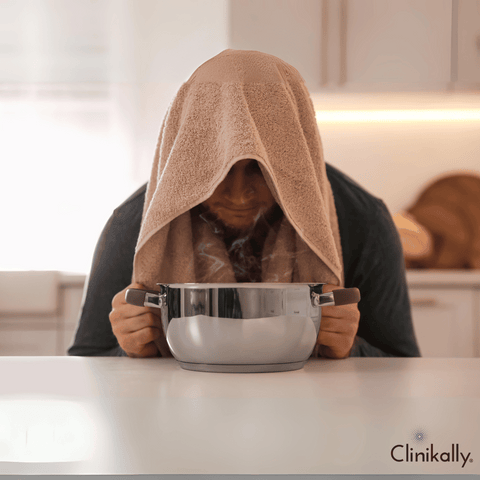
There are several effective ways to open clogged pores and improve the overall appearance of the skin. Here is a step-by-step guide to help you get started:
-
Step 1: Cleanse the skin thoroughly to remove any dirt, oil, and makeup. Use a gentle, oil-free cleanser and lukewarm water to avoid drying out the skin.
-
Step 2: Exfoliate the skin using a physical or chemical exfoliant. This will help to remove any dead skin cells and unclog the pores. Avoid over-exfoliating, as this can irritate the skin and worsen the appearance of clogged pores.
-
Step 3: Use a facial steamer or warm washcloth to open the pores. This will help to loosen any impurities and make it easier to extract them. Be sure to use caution and avoid burning the skin.
-
Step 4: Extract the impurities using a soft, clean cloth or an extraction tool. Be gentle and avoid applying too much pressure, as this can damage the skin and cause scarring.
-
Step 5: Apply a toner to help tighten the pores and remove any remaining impurities. Look for toners that contain astringent ingredients such as witch hazel or tea tree oil.
-
Step 6: Finish with a moisturizer to hydrate the skin and protect it from further damage. Choose a lightweight, oil-free moisturizer to avoid clogging the pores.
Daily cleansing routines for unclogging pores
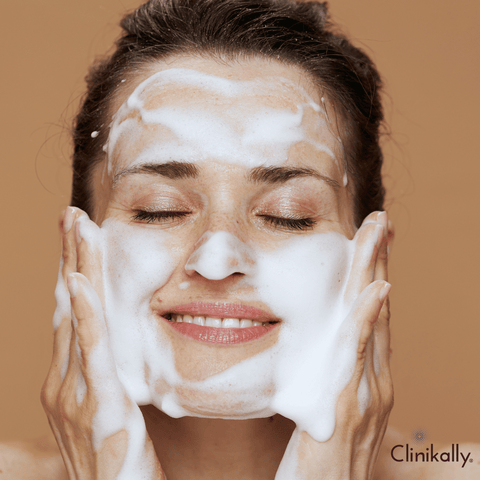
A daily cleansing routine is essential for unclogging pores and keeping skin healthy. Here's a simple routine for daily cleansing that can help prevent and treat clogged pores:
-
Select the Proper Cleanser: Use a gentle, non-comedogenic cleanser that is appropriate for your skin type. Avoid using harsh soaps or cleansers that contain excessive drying agents, as they can strip the skin of natural oils and potentially aggravate pore issues.
-
Wash Your Face Twice Daily: In the morning, cleanse your face to remove any oil, sweat, or products that may have accumulated overnight. It is critical to thoroughly cleanse your face at night to remove makeup, sunscreen, and accumulated debris from the day.
-
Warm Water for Washing: Wash your face with lukewarm water. Hot water can strip the skin's natural oils, causing it to overcompensate by producing more oil.
-
Gentle exfoliation (2-3 times per week): Exfoliate your skin on a regular but not excessive basis to remove dead skin cells that can contribute to clogged pores. Choose a gentle exfoliant containing salicylic acid or alpha hydroxy acids (AHAs).
-
Pat Your Face Dry: After cleansing, pat your face dry with a clean, soft towel. Avoid rubbing your skin because it can irritate.
-
Toner (Optional): If you decide to use a toner, choose one that is alcohol-free and appropriate for your skin type. Toners can help balance the pH of the skin and remove any remaining impurities.
-
Apply a Sufficient Moisturiser: Moisturiser is essential, even if you have oily or acne-prone skin. Choose a non-comedogenic, oil-free moisturiser to keep your skin hydrated without clogging pores.
-
Sunscreen Every Morning: Regardless of the weather, apply a broad-spectrum sunscreen with at least SPF 30 every morning. Sunscreen shields your skin from UV rays, preventing premature ageing and damage that can lead to clogged pores.
-
Remove Makeup Thoroughly: If you wear makeup, make sure to completely remove it before cleansing your face. Leaving your makeup on overnight can lead to clogged pores.
-
Cleanse Your Face After Sweating: If you have been sweating, wash your face as soon as possible to prevent sweat from combining with sebum and clogging pores.
Remember that consistency is essential. While establishing a daily cleansing routine is important, it is also important to be patient because skin improvements may take time. If you have specific skin concerns or persistent problems, consult with a dermatologist for personalised advice and recommendations.
Exfoliation techniques for clearer skin
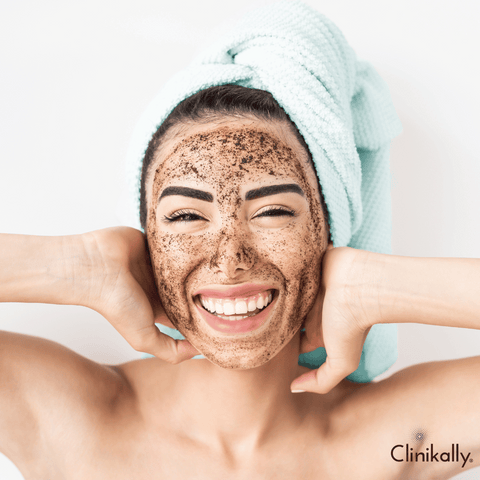
Exfoliation is an important part of any skincare routine because it removes dead skin cells, unclogs pores, and promotes a brighter complexion. However, exfoliating should be done with caution in order to avoid irritation and sensitivity. Here are some good exfoliation methods for clearer skin:
-
Chemical Exfoliants: Glycolic acid (derived from sugar cane) and lactic acid (found in milk) are two examples. AHAs are water-soluble and help exfoliate the skin's surface, making them ideal for dry or sun-damaged skin. Salicylic acid is a common BHA that is oil-soluble and can enter pores. BHAs are great for oily or acne-prone skin because they unclog pores and reduce inflammation.
-
Enzyme Exfoliants: These break down dead skin cells by using natural enzymes, which are often derived from fruits like papaya or pineapple. Enzyme exfoliants are gentler than acid-based exfoliants and are appropriate for sensitive skin.
-
Physical Exfoliants (Occasional Use): Physical exfoliants slough off dead skin cells by using granules or particles. While these can be effective, they should be used with caution because they can irritate the skin. Choose fine-particle products and use them no more than once or twice a week.
-
Exfoliating Cleansers: Exfoliating ingredients such as glycolic acid or salicylic acid are found in some cleansers. These can be a quick and easy way to add exfoliation to your daily routine.
-
Use a Soft Washcloth: During your cleansing routine, gently exfoliate your skin with a soft washcloth in a circular motion. Avoid using a rough or abrasive cloth and avoid applying too much pressure.
-
Exfoliating Masks: Exfoliating masks, such as clay masks or those containing alpha or beta hydroxy acids, can be used once or twice a week to increase exfoliation.
-
Microdermabrasion: A more intensive exfoliation method that is frequently performed in a spa or dermatologist's office. It removes the outer layer of the skin by spraying small crystals on it with a machine. There are also at-home microdermabrasion kits available, but use them with caution to avoid irritation.
-
Follow Proper Timing: Follow the directions on your exfoliant carefully, and avoid using multiple exfoliating products at the same time. Excessive exfoliation can damage the skin's barrier and increase sensitivity.
-
Patch Test New Products: Perform a patch test before incorporating a new exfoliating product into your routine to ensure your skin does not react negatively.
-
Moisturise and Apply Sunscreen: Moisturise your skin after exfoliation to keep it hydrated. Apply sunscreen first thing in the morning because exfoliation can make your skin more sensitive to the sun.
If you have specific concerns about your skin type or conditions, consult with a dermatologist who can provide personalised recommendations for an effective exfoliation routine.
Is it possible to close open pores permanently?
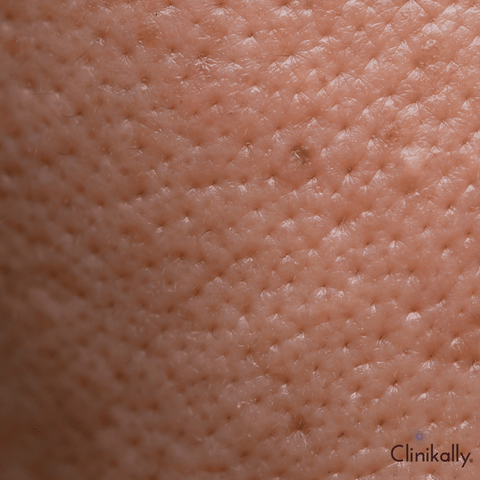
It is not possible to permanently close the pores on your skin. If clogged pores concerns you its best to see a dermatologist who can suggest the right skin care approach to unclog pores or reduce there size. At Clinikally, you can consult dermatologist online and speak to doctor over a video call. The pores are small openings on the surface of the skin that serve a vital function in regulating oil production and protecting the body from environmental pollutants. While it is possible to minimise the appearance of open pores and keep them from becoming enlarged, it is not possible to completely close them.
Myths vs. realities of pore size reduction

There are numerous myths and misconceptions surrounding the topic of pore size reduction. Let us dispel some common myths about reducing the appearance of pore size:
-
Myth 1: Pores can shrink physically.
-
Reality: Pore size is largely determined by genetics, and you cannot permanently alter the size of your pores. You can, however, take steps to reduce their visibility.
-
Myth 2: Cold water causes pores to shrink.
-
Reality: Splashing cold water on your face may temporarily constrict blood vessels and reduce inflammation, giving the appearance of smaller pores. This effect, however, is only temporary and has no effect on the size of the pores.
-
Myth 3: Hot water causes pores to open.
-
Reality: Hot water can help loosen debris in the pores, temporarily making them appear larger. Hot water, on the other hand, can strip the skin of natural oils, increasing oil production and potentially exacerbating pore issues.
-
Myth 4: Pore strips remove blackheads permanently.
-
Reality: Although pore strips can remove some blackheads, they do not address the underlying causes of enlarged pores. Overuse of pore strips can irritate the skin and potentially worsen the problem.
-
Myth 5: Scrubbing Can Reduce Pore Size.
-
Reality: Physical exfoliation can irritate the skin and make pores appear smaller temporarily by removing dead skin cells. Over-exfoliation, on the other hand, can damage the skin barrier, resulting in increased sensitivity and potentially larger-looking pores.
-
Myth 6: Products have the ability to permanently shrink pores.
-
Reality: While some skincare products can improve the appearance of pores by exfoliating, hydrating, or stimulating collagen production, they cannot permanently change pore size. However, using certain ingredients on a regular basis can make pores appear smaller over time.
-
Myth 7: Only people with oily skin have large pores.
-
Reality: While oily skin types are more prone to enlarged pores due to increased sebum production, people with other skin types can also have large pores. Pore size is affected by ageing, sun damage, and genetics.
-
Myth 8: Sunscreen causes pores to enlarge.
-
Reality: Sun damage can cause collagen breakdown, resulting in less skin support and larger-looking pores. Using sunscreen can help protect the skin from UV damage and may prevent further pore enlargement.
-
Myth 9: Makeup causes pore enlargement.
-
Reality: High-quality, non-comedogenic makeup does not clog pores. However, failing to properly remove makeup can contribute to clogged pores and make them appear larger.
-
Myth 10: Hydrating oils cause pores to enlarge.
-
Reality: High-quality, non-comedogenic oils can help keep skin hydrated and may improve the appearance of pores. Using the right oils for your skin type can help.
While you can not permanently change your pore size, a consistent skincare routine that includes gentle cleansing, exfoliation, and proper hydration can help minimise the appearance of pores and promote overall skin health. A dermatologist can provide tailored advice based on your specific skin concerns.
Long-term strategies for maintaining clear pores
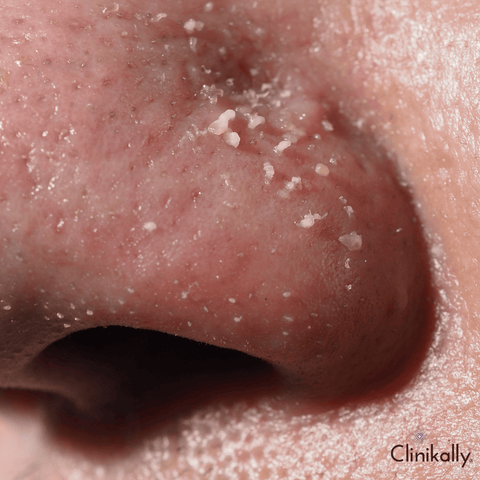
Consistent and long-term skincare practises are required to maintain clear pores. Here are a few pointers to help you achieve and keep clear pores:
-
Regular Cleansing: Cleanse your face twice a day (morning and night) with a gentle, non-comedogenic cleanser to remove oil, sweat, and debris. This helps to prevent the buildup of substances that can cause clogged pores.
-
Exfoliation: Include exfoliation on a regular basis in your regimen to get rid of dead skin cells. Choose products containing alpha hydroxy acids (AHAs) or beta hydroxy acids (BHAs) for effective exfoliation. However, avoid over-exfoliating as this can irritate the skin.
-
Non-comedogenic Products: Non-comedogenic skincare and makeup should be used. These items are less likely to clog pores and contribute to acne development.
-
Hydration: Use a moisturiser that is appropriate for your skin type to keep your skin hydrated. Skin that is well-hydrated is less prone to excessive oil production, which can lead to clogged pores.
-
Sun Protection: Use a broad-spectrum sunscreen with at least SPF 30 every day, even on cloudy days. Sun protection can help prevent sun damage, which can age the skin and cause pores to enlarge over time.
-
Balanced Diet: Consume a well-balanced diet that is high in fruits, vegetables, and whole grains. These foods' antioxidants can help with general skin health. It is also critical to stay hydrated by drinking plenty of water.
-
Avoid Touching Your Face: Avoid touching your face with your hands because it can transfer oils, dirt, and bacteria. Touching your face can also aggravate pre-existing skin problems.
-
Cleanse After Sweating: Cleanse your face after exercising or sweating to remove sweat and prevent it from mixing with sebum and potentially clogging pores.
-
Manage Stress: Chronic stress can aggravate skin problems such as clogged pores. To promote overall well-being, use stress-reduction techniques such as mindfulness, meditation, or yoga.
-
Regular Professional Skincare: Consider getting professional facials or treatments that target clogged pores on a regular basis. Extractions performed by an aesthetician can help keep your skin clear.
-
Retinoids: Consider including retinoids in your skincare regimen. Retinoids, such as retinol or prescription-strength tretinoin, can increase cell turnover, which prevents dead skin cells from accumulating and clogging pores.
-
Consult a Dermatologist: Consider seeing a dermatologist if you have persistent problems with clogged pores or acne. They can give you personalised advice, prescribe medications, and refer you to a professional for treatment.
Remember that getting and keeping clear pores is a gradual process. It's important to be patient and consistent with your skincare routine. Adjustments may be required due to changes in your skin, environmental factors, or other variables.
Shrink skin pores to boost skin appearance!

To summarise, open pores are a common skin concern that can be caused by a variety of factors, such as oily or combination skin, hormonal changes, poor skincare, and environmental pollutants. While it is not possible to permanently close the pores on your skin, there are several effective steps you can take to minimize their appearance and keep them from becoming enlarged. This includes cleansing the skin daily, exfoliating regularly, using a toner, applying a facial mask, and using a moisturiser. Additionally, protecting the skin from the sun and avoiding harsh, drying products can help to keep the pores healthy and minimize their appearance. If you are unable to improve the appearance of your open pores on your own, consider consulting with a dermatologist for personalised recommendations and treatments.
Best skincare products to unclog pores
Here are some of the best products for opening clogged pores and improving the overall appearance of the skin:
|
Product |
Description |
|
A mild, non-irritating formula effectively cleanses the skin without stripping it of its natural oils and emollients |
|
|
A lightweight, oil-free formula helps to unclog pores and clear up acne breakouts |
|
|
With an active mineral complex of powerful acting amino acids and minerals, it deeply cleanses impurities from your face without drying it |
Remember to use these products as part of a regular skincare routine, and to consult with a dermatologist if you have any concerns about your skin. With the right products and techniques, you can effectively open your clogged pores and achieve healthy, glowing skin.
How to clear open pores on the face
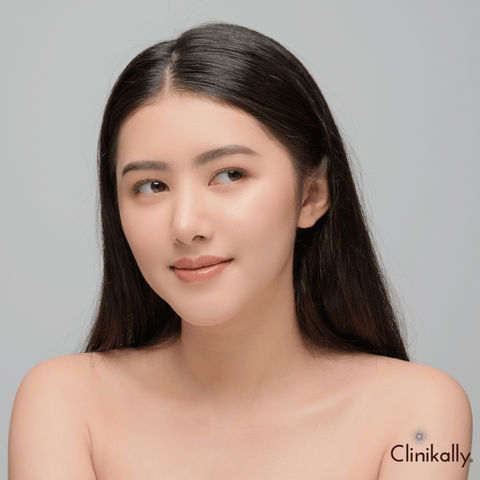
While it is not possible to permanently close the pores on your face, there are several steps you can take to minimize their appearance and keep them from becoming enlarged. Here are some tips and tricks to help you get started:
-
Step 1: Cleanse the skin daily to remove excess oil, dirt, and makeup. Choose a gentle, oil-free cleanser and use lukewarm water to avoid drying out the skin.
-
Step 2: Exfoliate the skin regularly using a physical or chemical exfoliant. This will help to remove dead skin cells and unclog the pores, making them less visible. Avoid over-exfoliating, as this can irritate the skin and worsen the appearance of open pores.
-
Step 3: Use a toner after cleansing to help tighten the pores and remove any remaining impurities. Look for toners that contain astringent ingredients such as witch hazel or tea tree oil.
-
Step 4: Apply a facial mask once or twice a week to help tighten and refine the pores. Look for masks that contain clay or charcoal, as these ingredients can help to absorb excess oil and impurities from the pores.
-
Step 5: Use a moisturising cream daily and twice a day to hydrate the skin and protect it from environmental damage. Choose a lightweight, oil-free moisturiser to avoid clogging the pores.
-
Step 6: Protect the skin from the sun by applying a broad-spectrum sunscreen with an SPF of 30 or higher. Sun exposure can worsen the appearance of open pores, so be sure to reapply sunscreen every two hours when outdoors.
-
Step 7: Avoid using harsh, drying products on the skin, as these can strip the natural oils and emollients that help to keep the pores healthy. Choose dermatologist-recommended skincare products that are gentle and non-irritating, and avoid using hot water when cleansing the skin.
-
Step 8: Consider using a retinol or retinoid product to help improve the texture and appearance of the skin. These ingredients can help to stimulate collagen production and smooth the skin, making the pores less visible.
-
Step 9: If you are unable to improve the appearance of your open pores on your own, consider consulting with a dermatologist. They can provide personalized recommendations and treatments to help you achieve your desired results.
By following these tips and incorporating them into your skincare routine, you can help to minimize the appearance of open pores on your face and improve the overall health and appearance of your skin. Remember to be patient and consistent, as it may take some time to see noticeable results.
How to clear open pores on nose

The nose is a common area for open pores, as it has a high concentration of sebaceous glands that produce oil. While it is not possible to permanently close the pores on the nose, there are several steps you can take to minimize their appearance and keep them from becoming enlarged. Here are some tips and tricks to help you get started:
-
Step 1: Cleanse the nose thoroughly to remove excess oil, dirt, and makeup. Use a gentle, oil-free cleanser and lukewarm water to avoid drying out the skin.
-
Step 2: Exfoliate the nose regularly using a physical or chemical exfoliant. This will help to remove dead skin cells and unclog the pores, making them less visible. Avoid over-exfoliating, as this can irritate the skin and worsen the appearance of open pores.
-
Step 3: Use a toner after cleansing to help tighten the pores and remove any remaining impurities. Look for toners that contain astringent ingredients such as witch hazel or tea tree oil.
-
Step 4: Apply a facial mask once or twice a week to help tighten and refine the pores. Look for masks that contain clay or charcoal, as these ingredients can help to absorb excess oil and impurities from the pores.
-
Step 5: Use a moisturizer daily to hydrate the skin and protect it from environmental damage. Choose a lightweight, oil-free moisturizer to avoid clogging the pores.
-
Step 6: Protect the skin from the sun by applying a broad-spectrum sunscreen with an SPF of 30 or higher. Sun exposure can worsen the appearance of open pores, so be sure to reapply sunscreen every two hours when outdoors.
-
Step 7: Avoid using harsh, drying products on the nose, as these can strip the natural oils and emollients that help to keep the pores healthy. Choose products that are gentle and non-irritating, and avoid using hot water when cleansing the nose.
-
Step 8: Consider using a retinol or retinoid product to help improve the texture and appearance of the skin. These ingredients can help to stimulate collagen production and smooth the skin, making the pores less visible.
-
Step 9: If you are unable to improve the appearance of your open pores on your own, consider consulting with a dermatologist. They can provide personalized recommendations and treatments to help you achieve your desired results.
By following these tips and incorporating them into your skincare routine, you can help minimise the appearance of open pores on your nose and improve the overall health and appearance of your skin. Remember to be patient and consistent, as it may take some time to see noticeable results.
If you are concerned about the appearance of open pores on your skin, there are several steps you can take to improve their appearance and keep them from becoming enlarged. This includes cleansing the skin daily, exfoliating regularly, using a toner, applying a facial mask, and using a moisturizer. Additionally, protecting the skin from the sun and avoiding harsh, drying products can help to keep the pores healthy and minimise their appearance.
Professional treatments for enlarged pores
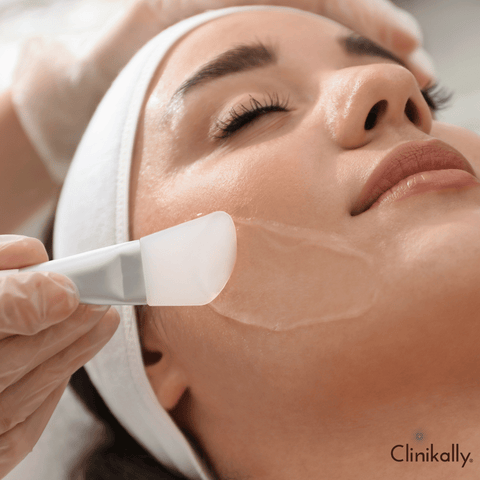
Several expert treatments are available to help with enlarged pores and enhance skin texture. Dermatologists or licenced skincare professionals often perform these procedures. Remember that the success of these therapies varies from person to person, and that numerous sessions may be required for optimal outcomes. Some expert treatments for enlarged pores are as follows:
-
Microdermabrasion: Microdermabrasion uses a machine to exfoliate the skin's outer layer, which helps to enhance texture and minimise the appearance of enlarged pores. It is a non-invasive technique with little to no downtime.
-
Chemical Peels: Chemical peels exfoliate the skin and increase cell turnover by using acids such as glycolic acid or salicylic acid. This can aid in the unclogging of pores and the overall look of the skin.
-
Laser Therapy: Laser treatments, such as fractional laser therapy, can increase collagen formation and enhance skin texture. Lasers work by targeting the deeper layers of the skin, causing tightness and minimising the appearance of enlarged pores.
-
Intense Pulsed Light (IPL) Therapy: IPL therapy targets pigmentation while also stimulating collagen formation. This can improve skin tone, reduce redness, and make big pores appear smaller.
-
Radiofrequency (RF) Microneedling: Microneedling is a technique that includes using tiny needles to induce controlled micro-injuries in the skin. This therapy, when combined with radiofrequency technology, can increase collagen and elastin formation, resulting in tighter skin and fewer pores.
-
Dermabrasion: Dermabrasion is a more extreme method of skin resurfacing that involves removing the skin's outer layers. This surgery is normally reserved for more serious skin issues and may have a longer recovery period.
-
Fractional Radiofrequency (FRF): FRF treatments use fractional radiofrequency radiation to promote collagen remodelling and skin tightening. This can help to reduce the appearance of enlarged pores.
-
Topical Retinoid Treatments: Dermatologists may recommend prescription-strength retinoid treatments, such as tretinoin, to promote cell turnover and improve skin texture. These are frequently used in conjunction with other treatments.
-
HydraFacial: HydraFacial treatment is a non-invasive procedure that combines cleansing, exfoliation, extraction, hydration, and antioxidant protection. It can improve skin texture and make big pores appear smaller.
-
Injectable Fillers: Hyaluronic acid-containing dermal fillers can be deliberately injected to give volume to areas around larger pores, giving the skin a smoother appearance.
-
Injectable Fillers: Dermal fillers containing hyaluronic acid can be deliberately injected to enhance volume to areas around enlarged pores, giving the skin a smoother appearance.
-
Subcision: Subcision is a treatment in which a needle is used to break apart the fibrous bands beneath the skin's surface, allowing stored collagen to be released and improving the appearance of rolling or atrophic scars associated with increased pores.
It is important to check with a skilled dermatologist or skincare specialist before beginning any professional therapy. They can analyse your skin condition, talk about your goals, and recommend the best treatment options for your specific needs and skin type.
























